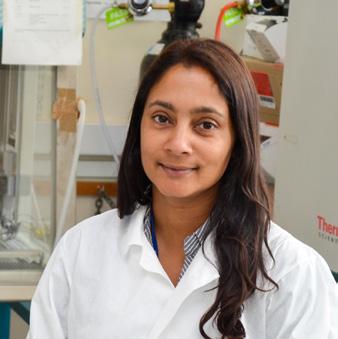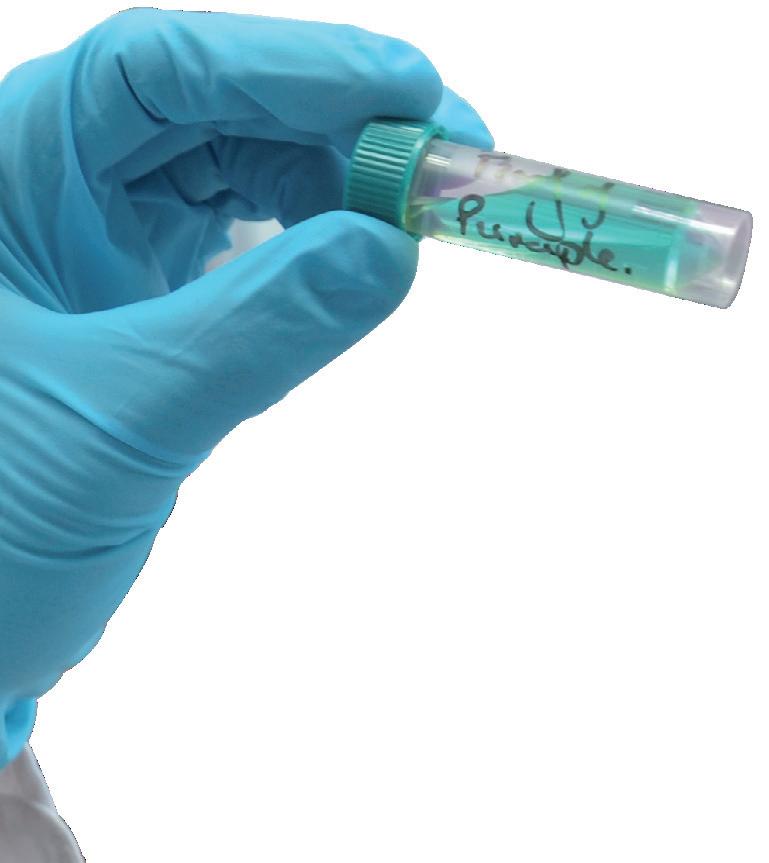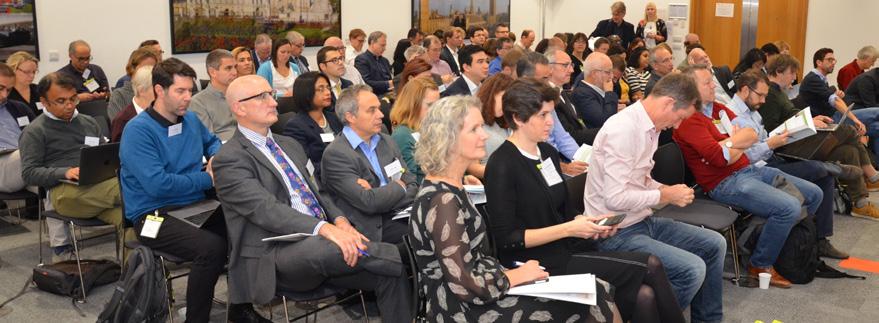
3 minute read
COVER HIGHLIGHTS
IMPERIAL COLLEGE PUBLISHES IMPORTANT NEW RESEARCH RESULTS
Researchers led by Dr Nelofer Syed at the Brain Tumour Research Centre of Excellence at Imperial College London have published ground-breaking research in the journal, Cell Death & Disease, part of the Nature publishing house.
Their paper shows that in a mouse model, a drug that depletes levels of arginine is particularly effective when used alongside temozolomide, a standard of care chemotherapy drug already used in humans for glioblastoma multiforme (GBM). Arginine is an amino acid, one of the building blocks of protein that can be used as a source of energy by GBM brain tumours.

The drug, ADI-PEG20, is in early stage clinical trials for other cancers, so the most effective and best tolerated dose is already being established in humans. This means that as a repurposed drug, it can move into human clinical trials for GBM more quickly than a completely novel drug. Dr Nelofer Syed said: “We have been
working on this theory for a few years and were one of the first groups to prove that ADI-PEG20 works on brain tumour cell lines in the laboratory. This initial work was published in 2013. “We are excited to report this first demonstration that depletion of arginine in blood is effective in treating GBM in the presence of an intact blood-brain barrier. Drugs designed to defeat brain tumours usually need to get through the bloodbrain barrier, which protects the brain from toxins in the blood stream.
“ADI-PEG20 is different because it works throughout the body to reduce arginine levels in all types of fluid, so the blood-brain barrier can’t defeat its effects.”
Patients who could potentially benefit from this therapy can be identified using a simple test on the tumour sample taken for initial diagnosis by the pathologist. The trial protocol is near completion and will be submitted for funding within the next few months, so we’ll let you know if it’s successful.
Help fund our work at our dedicated UK Centres of Excellence and let’s put an end to brain tumours once and for all: www.braintumourresearch.org/ donate-now
NEUROSCIENCES AND BRAIN TUMOUR RESEARCH
JOINING FORCES FOR GREATER IMPACT
Over 120,000 people signed the e-petition, begun by the Realf family in 2015, calling for greater funding into UK brain tumour research.

Those signatures have started a cascade of amazing events, demonstrating that even the smallest of positive actions can have a real and lasting impact. The petition led to a debate in the House of Commons and then the foundation of a Task and Finish Working Group, chaired by Chris Whitty (Department of Health and Social Care Chief Scientific Advisor) and including both our Chief Executive, Sue Farrington Smith, and Nathan Richardson, Head of Molecular and Cellular Medicine at the Medical Research Council.
The group’s report, published in February 2018, highlighted opportunities for the neuroscience and brain tumour communities to work together, and so in October last year a workshop was organised by Brain Tumour Research, the Medical Research Council and the British Neuroscience Association to encourage and enable multi-disciplinary collaborations between researchers in these two related fields.
Common challenges identified include how to deliver drugs across the blood-brain barrier, and how to design studies that can account for how brain diseases (including cancer) change over time, including having relatively ‘quiet’ phases. Better models of brain function in both health and disease are urgently needed for laboratory research, as are more sensitive methods of imaging. Tissue banking and the importance of clinical as well as detailed tumour data was also considered critical. Clinical trials need to be carefully designed so that all sub-types of tumours are clearly accounted for, as each might respond differently to a new treatment method. Much more basic (early stage) research needs to focus on blood supply and tumour micro-environment (how the tumour interacts with healthy cells around it). There were also keen discussions around the fact that brain tumours should not be seen in isolation and both whole-brain and whole-person health must be considered in more detail.
The sharing of knowledge and expertise between researchers working on brain tumours and neurological conditions such as Alzheimer’s, Parkinson’s and epilepsy inspired lively debate and already some exciting new research ideas are beginning to take shape that hold great promise for bringing us closer to a cure.
Sign up to our e-news to keep up-to-date with all the collaborative work that we are enabling through our campaigning and knowledge-sharing initiatives: www.braintumourresearch.org/ contact/subscribe










